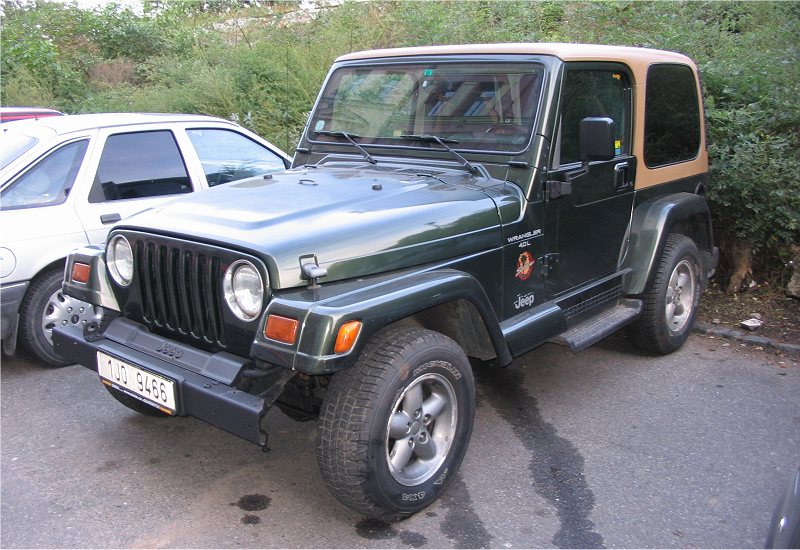Description
The Jeep Wrangler 4.0 L Sahara represented one of the most refined and desirable versions of the classic YJ and later TJ Wranglers, blending Jeep’s legendary toughness with a level of comfort and style that broadened its appeal well beyond traditional off-road enthusiasts. Introduced in 1988 as a trim level for the Wrangler YJ and continuing into the TJ generation from 1997 onward, the Sahara combined the proven 4.0-litre inline-six engine with upgraded interior features, distinctive styling, and a balance of everyday usability and serious off-road ability. It was the Wrangler for those who wanted adventure with a touch of refinement.
At the heart of the Wrangler Sahara was Jeep’s iconic 4.0-litre inline-six engine, one of the most respected powerplants ever fitted to a 4×4. Developed by AMC, this 3,965 cc engine produced around 177 horsepower and 298 Nm of torque in early YJ models, later rising to 190 horsepower in the high-output version used in the TJ. The engine’s long-stroke design delivered smooth, linear torque from low revs, making it perfectly suited for slow, technical off-road driving while providing enough power for confident highway cruising. Known for its durability and simplicity, the 4.0 could routinely cover hundreds of thousands of kilometres with little more than basic maintenance.
Power was sent through a robust five-speed manual gearbox—usually the AX15 in YJ models or the NV3550 in early TJs—or an optional four-speed automatic transmission. Both were paired with Jeep’s part-time Command-Trac four-wheel-drive system, featuring a two-speed transfer case that allowed shifting from 2WD to 4WD on the move. The low-range gearing was designed for rock crawling and steep terrain, while the solid Dana axles front and rear ensured strength and dependability. This setup, combined with the Wrangler’s short wheelbase and high ground clearance, gave the Sahara serious off-road credibility despite its more comfortable trimmings.
Visually, the Sahara stood apart from other Wrangler trims with its distinctive styling cues. The body was painted in exclusive earth-toned colors—often sand, moss green, or stone beige—and accented with body-colored fender flares and signature “Sahara” decals. The YJ Sahara featured unique side steps and a painted hardtop option, while later TJ Saharas included wider flares, two-tone bumpers, and subtle gold or silver striping. The look captured a sense of adventure and rugged sophistication, suggesting a vehicle equally at home in the city or far off the beaten path.
The interior of the Wrangler Sahara offered the greatest contrast to its utilitarian predecessors. While still simple and functional, it featured upgraded materials and amenities. The seats were upholstered in high-quality cloth or leather-trimmed fabric with distinctive Sahara embroidery, and carpeting replaced the bare metal floors of earlier Wranglers. Door panels, dashboard trim, and center consoles were color-coordinated to match the exterior tones, giving the cabin a more cohesive and inviting atmosphere. Features such as air conditioning, full doors with roll-up windows, a premium audio system, and optional hardtops made the Sahara practical for daily use while retaining the open-air freedom that defined the Jeep experience.
Driving the Wrangler 4.0 L Sahara revealed its dual personality. On the road, the inline-six delivered effortless torque, making it easy to drive smoothly at low revs and comfortable at highway speeds. The solid axles and leaf-spring suspension of the YJ generation gave it a firm, somewhat truck-like ride, but the TJ model introduced coil springs all around in 1997, greatly improving comfort and handling without sacrificing off-road ability. The steering was still slow by car standards, but it was precise and communicative, allowing the driver to feel the terrain beneath the tires.
Off-road, the Sahara remained a genuine Jeep. With its low gearing, excellent approach and departure angles, and exceptional axle articulation, it could handle steep climbs, deep mud, and rocky trails with confidence. The 4.0 engine’s torque delivery made it ideal for slow, controlled movement over obstacles, and its mechanical simplicity meant it could withstand years of demanding use. Many owners enhanced their Saharas with mild lift kits, larger tires, and skid plates, transforming them into capable trail machines without sacrificing their comfort.
The Wrangler 4.0 L Sahara also became a cultural symbol. It embodied the adventurous image Jeep had cultivated since World War II but added a sense of everyday usability that appealed to a broader audience. It was equally popular with off-road enthusiasts and urban drivers who admired its rugged charm. Its open-top design and removable doors made it a lifestyle vehicle as much as a utility one, celebrated for the freedom it offered.
By the late 1990s, the TJ Sahara in particular had perfected the balance of classic Jeep design and modern refinement. The switch to round headlights restored the traditional Jeep face, while the coil-spring suspension gave the Wrangler a much smoother ride. The 4.0-litre high-output engine remained at the heart of the experience, delivering effortless torque and the unmistakable sound of a true Jeep powerplant.
Today, the Jeep Wrangler 4.0 L Sahara is considered one of the most desirable versions of the classic Wrangler. Its combination of timeless styling, powerful and reliable engine, and well-appointed interior make it a favorite among collectors and enthusiasts. Restored examples are prized for their authenticity and build quality, and many continue to serve as reliable daily drivers or weekend explorers.
The Sahara trim elevated the Wrangler from a bare-bones utility vehicle to a refined adventure machine without compromising its essence. It preserved everything that made the Jeep special—simplicity, capability, and mechanical honesty—while adding comfort, color, and character. The 4.0-litre engine gave it the muscle to match its spirit, and the result was a vehicle that stood at the perfect intersection of power, heritage, and freedom.
